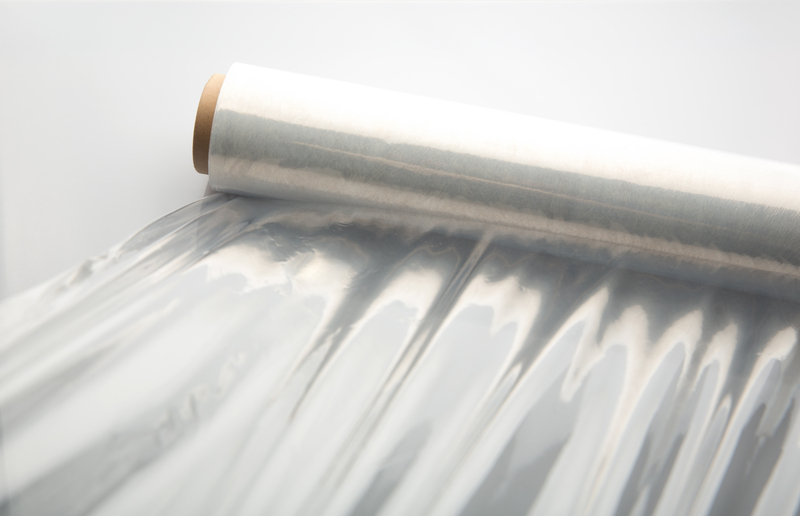Master the Art of Removing Damp Smells
Posted on 25/06/2025
Master the Art of Removing Damp Smells: Your Comprehensive Guide
Damp, musty smells are unwelcome guests in any home. Whether they invade basements, closets, bathrooms, or your favorite upholstered furniture, these lingering odors are not only unpleasant but can also signal potential health hazards such as mold and mildew. In this ultimate guide, you'll discover expert and actionable techniques to remove damp smells, prevent their return, and foster a fresh, inviting home environment.
Understanding the Causes of Damp Smells
Before diving into the art of eliminating musty odors, it is crucial to identify their root causes. Damp smells generally emerge from:
- Poor ventilation: Stagnant air prevents moisture from evaporating, making rooms susceptible to musty scents.
- Excess humidity: High levels of moisture in the air feed mold and mildew growth.
- Water leaks: Dripping pipes or roof leaks create ideal environments for musty smells to develop.
- Organic matter such as wood, fabric, or paper: These materials readily absorb and retain moisture and odors.
- Neglected cleaning habits: Dust, dirt, and lingering spills are breeding grounds for unwanted scents.

Step 1: Detect Moisture and Address Sources
Dampness is the enemy. To eliminate musty smells permanently:
- Inspect for leaks: Examine plumbing fixtures, ceilings, and walls for damp patches, mold, or water stains.
- Check for condensation: Look around windows and poorly insulated surfaces, especially during temperature fluctuations.
- Examine basement and crawlspaces: These are prime suspects for hidden moisture buildup.
- Don't underestimate attic spaces: Leaky roofs can cause moisture to accumulate where you least expect it.
Step 2: Enhance Airflow and Ventilation
Good airflow is a powerful ally in the fight against dampness. To remove damp smells and prevent their recurrence:
- Open windows and doors whenever possible to let fresh air circulate.
- Use extractor fans in kitchens, bathrooms, and laundry rooms to quickly reduce moisture.
- Install trickle vents or air bricks to boost ongoing ventilation.
- Consider air purifiers or dehumidifiers for chronically damp areas.
- Use ceiling or portable fans to further enhance air movement.
Step 3: Dry Out the Area with Effective Tools
Once you've improved ventilation, it's time to aggressively remove residual moisture. To completely get rid of damp odors:
- Run a dehumidifier in the affected area for several days, emptying the reservoir regularly.
- Utilize moisture-absorbing products like silica gel, calcium chloride, or specialized moisture absorbers.
- Place bowls of baking soda or activated charcoal around musty rooms. Both are excellent at absorbing odors and excess moisture.
- Hang damp fabrics or rugs outside in direct sunlight, which naturally kills bacteria and helps remove smells.
Step 4: Deep Clean to Eliminate Musty Odors
Sometimes, a deep clean is required to fully remove damp smells in your house or workplace.
Walls, Ceilings, and Hard Surfaces:
- Mix a solution of one part white vinegar to three parts water for effective mold and odor removal.
- Wipe down all surfaces, especially where discoloration or odor is present.
- Follow up with a clean-water rinse to avoid residue.
- Consider using commercial mold removers for stubborn infestations, but always follow manufacturer instructions.
Upholstery, Curtains, and Carpets:
- If washing instructions allow, machine wash with an odor-neutralizing detergent.
- For furniture or carpets that can't be laundered, sprinkle with baking soda, allow it to sit for several hours, then vacuum thoroughly.
- Hire a professional steam cleaner for deep, persistent odors. Steam helps kill bacteria and break down odor-causing compounds.
Closets and Small Spaces:
- Remove all contents and clean inside walls and shelves with a vinegar solution.
- Place open boxes of baking soda or activated charcoal on shelves to continuously absorb damp smells.
- Keep closet doors ajar when possible to enhance airflow and discourage humid buildup.
Step 5: Tackle Mold and Mildew at the Source
Mold and mildew are often the culprits behind persistent musty odors. They thrive in damp, dark environments and can cause allergies, asthma, and other health issues. To completely remove musty smells:
- Wear gloves and a mask for protection before cleaning moldy areas.
- Scrub affected spots with a mix of one cup white vinegar and one tablespoon of borax per liter of hot water.
- Allow treated surfaces to fully dry before restoring items.
- In cases of extensive, recurring mold, contact a professional remediation service.
Preventing mold regrowth is key to mastering the elimination of musty odors.
Step 6: Preventing the Return of Damp Smells
Once you have removed damp odors, put habits and systems in place so they never return:
- Regularly check for leaks and signs of moisture.
- Maintain humidity levels below 60%--a hygrometer makes monitoring easy.
- Avoid storing items directly against external walls where condensation is more likely.
- Organize and declutter to promote air circulation in storage spaces.
- Frequently air out rooms and storage areas.
Natural Remedies for Damp and Musty Odors
For those seeking green, chemical-free ways to remove musty smells, nature provides several powerful alternatives:
- White Vinegar: With its natural acidity, vinegar neutralizes odors and kills bacteria. Leave bowls of vinegar overnight in musty rooms.
- Baking Soda: This household staple absorbs both odors and moisture. Sprinkle liberally and vacuum after a few hours.
- Activated Charcoal: Highly absorbent, charcoal draws in and traps musty aromas. Place open bags or bowls in affected areas.
- Coffee Grounds: Coffee's natural scent and absorbency work wonders for closets or small spaces.
- Lemon Peels: For a natural air freshener, spread fresh lemon peels around affected areas to absorb odors and release a refreshing aroma.
- Essential Oils: Mix a few drops of lavender, tea tree, or eucalyptus oil into spray bottles with water and mist over surfaces for both odor removal and antifungal benefits.
Natural methods work best with consistent use and good ventilation.
Common Areas Prone to Damp Smells (And How To Treat Them)
Bathrooms
- Always use an extractor fan or open a window during and after showers.
- Regularly launder towels and bathmats.
- Inspect for leaks under sinks and around toilets.
- Use moisture-absorbing granules in cabinets or tight spaces.
Basements and Cellars
- Seal cracks in concrete and walls to prevent groundwater seepage.
- Elevate stored items off the floor with shelving.
- Run a dehumidifier year-round, especially in humid climates.
- Add a vapor barrier or waterproof coat to floors and walls for extra protection.
Closets and Wardrobes
- Keep clothes dry and aired before storing.
- Install a battery-powered closet dehumidifier or silica gel pouches.
- Cedar wood blocks repel odors and moths naturally.
Vehicle Interiors
- Check for leaks around door seals and sunroofs.
- Leave windows slightly open (if secure) after cleaning to help dry interiors.
- Use automotive odor neutralizers and keep floor mats clean and dry.

Bonus Tips: How to Freshen Your Home After Removing Damp Smells
Once you eliminate musty and damp odors, it's time to reintroduce a clean, inviting scent throughout your home:
- Simmer citrus peels, cloves, or cinnamon on the stove for a natural, lingering aroma.
- Hang fresh eucalyptus or lavender in closets for continuous freshness.
- Use essential oil diffusers in living rooms or bedrooms.
- Wash curtains, throws, and cushion covers regularly to keep fabrics smelling fresh.
- Keep houseplants such as peace lilies or Boston ferns--they naturally improve air quality and help minimize odors.
Conclusion: Become a Master at Removing Musty Smells
Mastering the art of removing damp smells requires a thorough, multi-step approach. By identifying and eliminating sources of moisture, enhancing ventilation, drying out affected areas, deep cleaning, and using natural remedies, you can permanently remove musty odors from your home. Adopting ongoing preventative measures ensures that damp smells will not return, creating a healthier, more comfortable living space for you and your family.
Say goodbye to dampness and musty aromas, and hello to a home that is always fresh, inviting, and healthy. Start your journey toward a cleaner atmosphere by applying the tips and strategies outlined in this guide.
Are you ready to banish damp smells once and for all? Use these proven techniques and enjoy the difference today!






